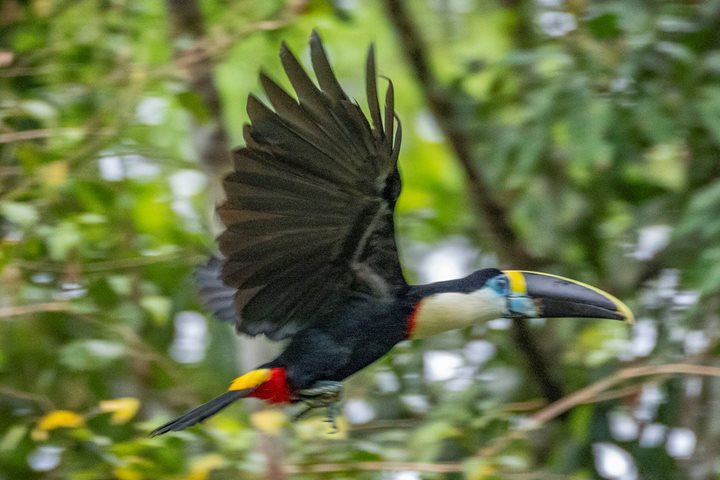A new day found us very near to a private reserve along the outside boundaries of the Pacaya-Samiria Reserve, the Amazon Natural Park. This reserve is so well managed by the owner that the Peruvian government recognized its conservation value declaring it a national private protected area as recently as in June 2011.
To explore this area we did a circuit that included a short catamaran ride, a fairly long walk, and the crossing of a suspension bridge. During the walk along the trail we encountered some huge ficus and rubber and Chiclet trees. We observed many lianas, vines, and flowers as well. The trail leads to a very long suspension bridge, which is approximately one-quarter of a mile in length. This well-built infrastructure allowed us to have a thrilling and exciting view of the middle strata of the rain forest. We could feel to some extent how many of the inhabitants of the rain forest see the world in a perspective that is completely new for us.
After crossing the bridge we walked back to the catamarans to return to where we began. Around the landing site it is sometimes possible to spot a small troop of pygmy marmosets. This is the smallest primate species in the world. It requires a lot of patience for these small mammals are relatively quiet, do not move much, and therefore are hard to find. In a lucky strike one marmoset came out of the high canopy to lick some sap from a tree. The little monkey came just when the sunlight was hitting making a great photo opportunity using a long lens.
Once back aboard, after a well-deserved refreshing shower and some cold drinks, we had a question-and-answer session with our Delfin II naturalists.
In the afternoon after a photography talk by our photo instructor Jose Calvo we had a late exploration of Nauta Caño either by kayaking or skiff riding. This narrow black water stream locally known in Spanish as “caño” (roughly translated to English as a stream) is covered with thick vegetation. Our expert naturalists spotted many species of neotropical birds that included tanagers, herons, parrots, hawks, and egrets. We were lucky enough to see a couple of three-toed sloths and a couple of squirrel monkey troops as well.
Finally, at around 18:00 we came back on board with many new memories and experiences that will give us a lot of material to talk about the wonders of the Amazon region for many years to come.







